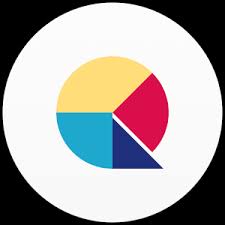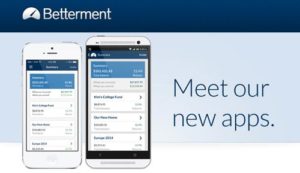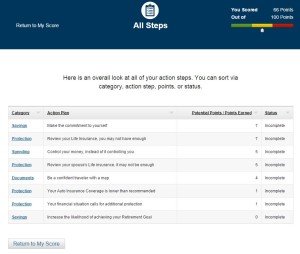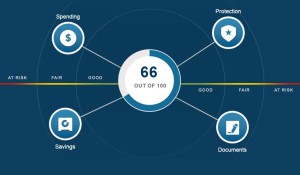Here’s another installment from my KLRN public television video series “It Just Makes Cents.” This one is on how to save money.
The text is linked here, if you like to read.
Or…if you like your juicy savings tips in podcast/audio format…we’ve got that too!
Fine, fine. Here’s the actual text on KLRN

—
You want to save money. Duh. Who doesn’t?
I’m a true believer in one way above all others. Let’s start with the one TRUE thing before reverting to other tried-and-true pieces of savings advice.
1. Automation
I believe in this above all other savings methods. Automate regular contributions of a set amount, on set days, into a savings account. You set up this automated plan with your bank or credit union once and then let it run in the background of your life. For the rest of your life. Every week, or every other week on payday, or every month (or whatever, knock yourself out, set it on daily, go crazy!) you automate a transfer from your checking account into a somewhat-harder-to-access savings account.
The key is to make today’s decision to save happen automatically in the future. Electronic. Programmed. Unchanging. Savings by Robot. That way, You don’t have to make the decision more than once. We’re not strong enough for that. But automation doesn’t depend on us being strong. Which is exactly why it works.
My bank takes a small amount of money every few days out of my checking account, automatically, and puts it into my savings account.
I’ve also successfully used the automated savings app Qapital for this automating function. This is by far the best new school way to save money and if you’re not doing it then I don’t know what to tell you except this, in a deep Arnold Schwarzenneger voice: DO IT.
After automation, tips 2 through 7 could also help.
2. Goal Setting
First – set a specific dollar amount. Next, name it. Write it down. Make it real. The idea here is that when you name your goal “Three fabulous new outfits to rock the house,” “Dream trip to Dollywood, TN,” or “BMX racer” or whatever you’re actually saving for, you change the feeling of savings from that grey gnawing emptiness in your belly into something tangible, exciting, colorful, and worthwhile. Going without today is a necessary step toward having something awesome tomorrow. Goal setting can help do that.
3. Round-ups
The old school way was to drop that pesky pocket-change of coins and small bills, collected throughout your day, into a change jar for a year or so, and then bring that all down to your bank or that coin machine at the grocery store.
The new school way is to use ‘round-ups,’ essentially the less-than-a-dollar change you’d get from making plastic purchases (via debit & credit cards) and then electronically tracking all that electronic loose change. When it reaches $5, you automate that amount into a savings account. Many banks can do this automated round-up thing for you, as will many savings apps like Qapital and Acorns.
Does it work? Yes, it works. Mostly because of (see above!) Automation.
4. Identify the Tiny Leak, maybe?
Maybe you can’t save, and you don’t know why. The answer is, maybe, in the small stuff? The dreaded answer, if you’ve ever read those other finance blogs aimed at Millennials, is your regular latte or your avocado toast. And you’re sick and tired of hearing that cliche. So you hope I won’t mention the words L*tte or a*ocado t*oast anymore.
Look, the big idea here is not to forbid you from having those things, or some other small luxury item you crave. The big idea is to find out – maybe just for informational purposes! – what you’re spending money on. So…try for a week…write down every single purchase you make. Tic-tacs. iTunes. Hulu subscription. Everything. Did you find the leak? I’m not saying you can’t have those things, but rather – it’s worth maybe knowing where the leak is coming from. Right? Well, maybe.
5. Sorry, But It’s Actually The Big Stuff
The worst thing about the avocado toast and latte lecture to Millennials is not that it’s a cliche (although the cliche is admittedly bad) but that it’s not even the heart of the matter. The ‘matter’ being your struggle to save money. The true fact is that most of your money is going to housing and transportation every month, not lattes and avocado toast. Which seems pretty immovable. But also…the correct answer to the savings puzzle – the mathematical answer – is your house payment and car payment. Do you really, really, really want to save money but can’t? Big changes in savings won’t happen without making difficult choices about your house or car payment. Sorry, I didn’t invent math. I’m just reminding you of it.
6. Only Carry Cash
You take out a certain amount of money. You buy stuff with that limited amount of cash. You don’t use plastic. When you run out of the cash, you don’t buy anymore, because: NO MORE MONEY. Your grandparents did this. They saved money this way. This is decidedly old-school and a bit extreme, but try it. Maybe it will work for you.
A variation on creating an all cash world is the envelope trick. Some people swear by this one. It’s similar to the “Only Carry Cash” tip, but a bit more organized. You label a bunch of physical paper envelopes with your specific monthly budget. Things like “Rent,” “Utilities,” “Groceries,” “Entertainment,” and “Gas Money/Transportation.” On payday, or the beginning of the month, you withdraw a set cash amount and put that amount in each envelope. When the money runs out this month, no more spending on that category until the next pay day. No plastic. No cheating. Again, it’s extreme. But this has worked for millions of people, and might for you.
7. Bargain/Haggle
You know what else Grandma did? She haggled. Everywhere. With her limited wad of cash. With all the shopkeepers. Like, every day. You can offer less than the store wants at pretty much any place that isn’t a complete chain store. All furniture stores, for example. Any service provider. All locally-owned businesses. Pretty much every business owner has a bit of flexibility in their prices, if you ask.

Does that seem uncomfortable? Would you be embarrassed to do this?
Well, put it this way: Would you make yourself momentarily uncomfortable by sticking your arm under the driver’s seat of your car to retrieve a $20 bill? I would. Well, haggling at the store is more like sticking your arm in an uncomfortable position with hundreds of dollars within grasp, and thousands of dollars at stake per year. Try a little discomfort. Your grandma actually enjoyed it. You might also.
But can I remind you of the one best way? Ready?
Automate your savings!
DO IT.
(Thanks, Arnold.)
Post read (264) times.













